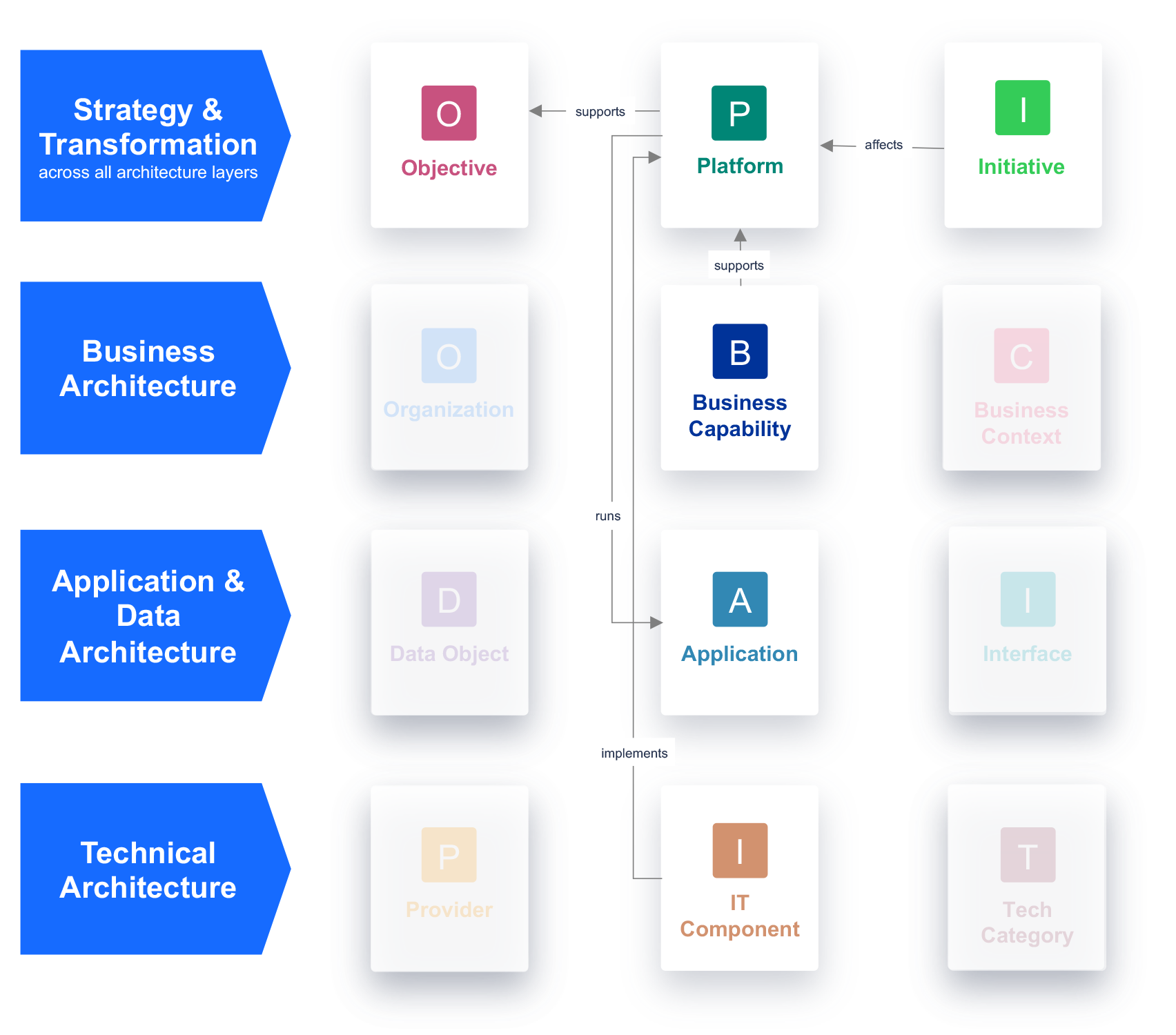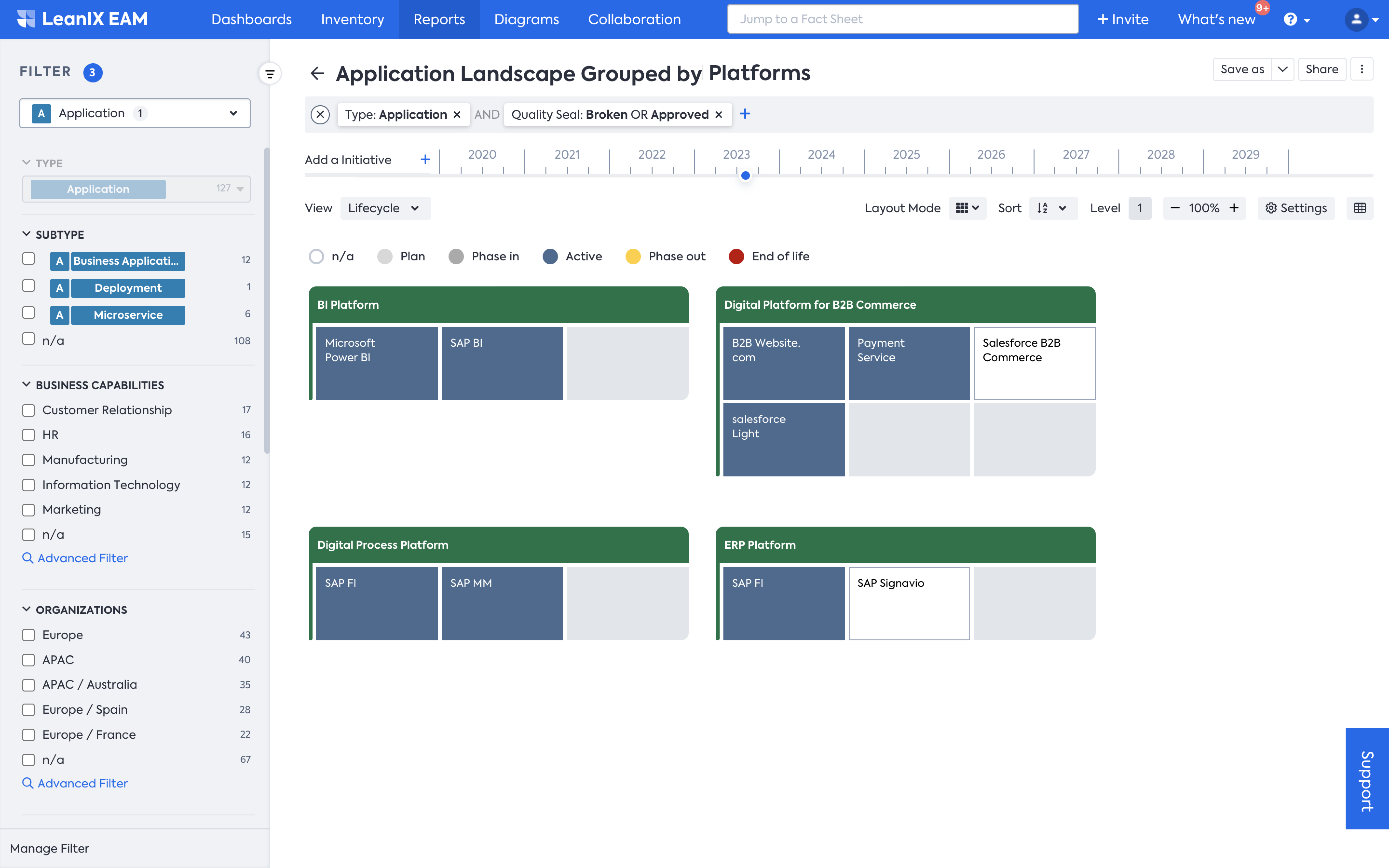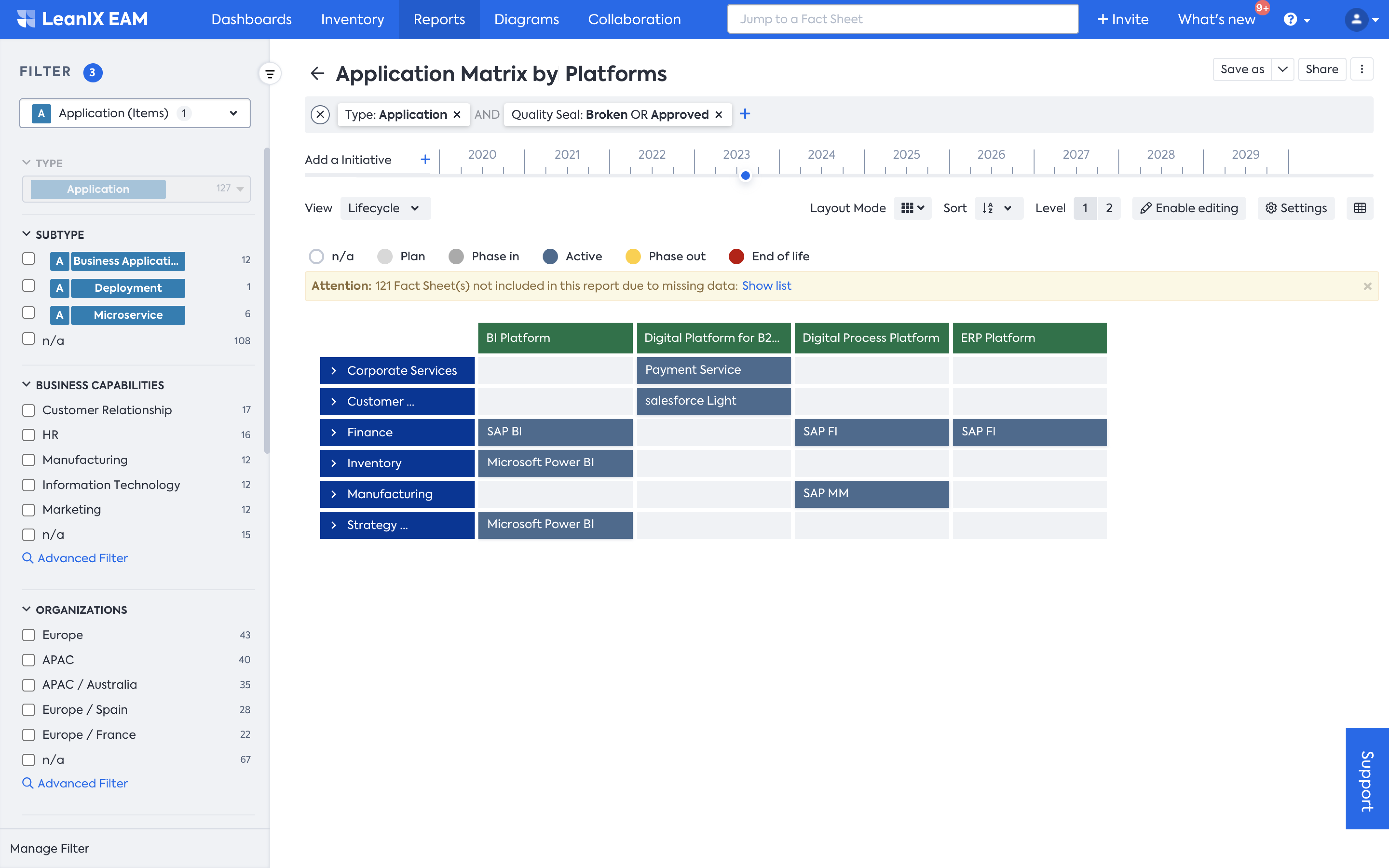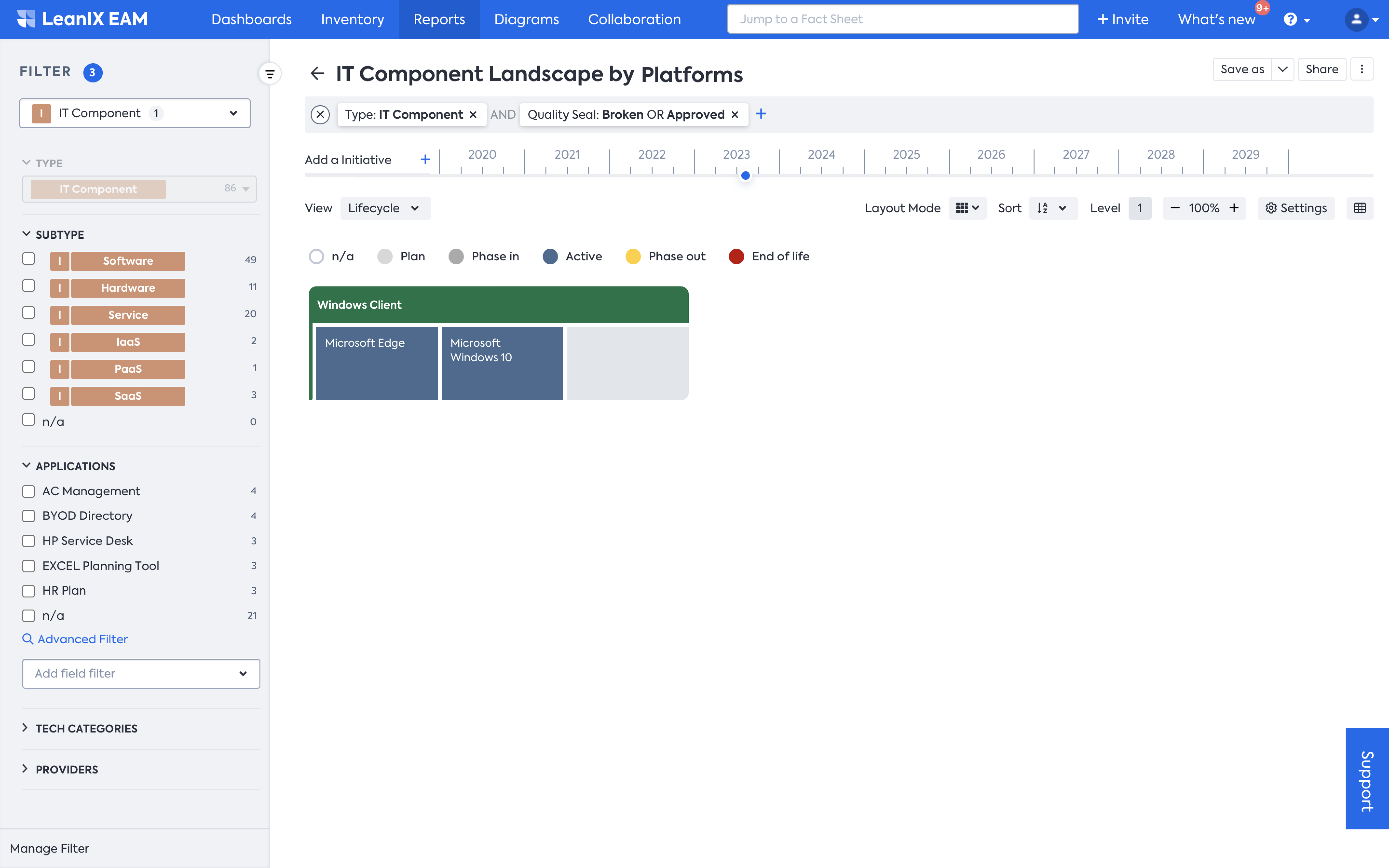Platform
Definition
Platforms are groupings of strategically relevant applications, or technologies that drive simplification and standardization and help IT focus on business benefits. Platforms provide functionality consumed by other applications and microservices to accelerate delivery or provide consistent/common functionality and support a set of capabilities.
Description
Typically, management stakeholders use something besides EA-specific terminology and concepts, such as business capabilities or applications. They instead speak of platforms as a broader category of summarizing IT/tech-related elements that support their business model. Platforms also reflect a standard used within the company, and can be leveraged to maintain that standard and ensure that it is being used.
The modeling of Platforms in LeanIX helps connect Fact Sheet types like IT Components and Applications to a concept understood and used by the C-Level. It provides CIOs with insights on critical components supporting the organization’s platforms, e.g., which Applications or microservices are consuming the Platform (e.g., via APIs to microservices) and which users/processes are backed by platform offerings vs. not as part of a transformation.
If your organization uses platforms as a strategically relevant concept, modeling those in LeanIX will increase the impact of your EA work.
Overview of all relations to/from Platform:

Platform Examples:
- Business Platform: B2B e-commerce platform for partners
- IT Platform: SAP BTP for e-commerce services
Guidelines and Best Practices
- Model Platforms only if it makes sense to your organization - e.g., model Digital Platforms if this is something typically understood by your C-Suite. Usually, organizations speak about, e.g., digital platforms as part of their high-level strategy.
- Less is more - reduce to a few platforms (without hierarchy) to simplify communication.
- Business Applications are a key part of each digital platform. Typically, each organization would have at least 2-3 platforms that drive change from the CIO level and improve a number of strategic business capabilities. The following example shows a view in the Application Landscape Report.

- In addition, as shown in the Matrix Report below, Platforms will often be defined in a way that supports specific capabilities of the business, e.g., ERP Platform / Digital Process Platforms supporting Manufacturing / Finance capabilities.

- There's also the important notion of Platform ownership, i.e., who is responsible for ensuring that the platforms are seen as the clear reference for a harmonized global implementation of ERP systems?
- A Platform can also be a (technical) grouping of IT Components and is described as a clear reference when considering the underlying components of Applications later on. You can use, e.g., the Landscape Report to see which IT Components belong to your platform - in this example, the Windows Client Platform.
- A Platform can express strategic IT standards and track the adoption (e.g., how many applications rely on the Windows Client platform). You can reuse it to show which organizational entities use the standard and create a follow-up platform that possibly includes more features to be rolled out to all regions, etc.

Antipatterns
This section addresses antipatterns involving ineffective or counterproductive ways of modeling Platform in LeanIX.
- A platform doesn’t provide features; you wouldn’t use a platform as an end user, but a specific Application; it serves as a language for C-Level to evolve IT.
- Don’t confuse Platform and Tech Category. The Tech Category is a logical grouping of technologies of similar functions (e.g., all of your databases), while the Platform is a technical grouping of IT Components of one type (e.g., all of your Oracle databases for B2C e-commerce) in relation to the strategic Initiatives, Business Capabilities, and Objectives.
Applicable Use Cases
- Application Modernization: Include Platforms early on to get C-Level buy-in for your modernization use case.
Insights from Platform Fact Sheet
- Understand which Applications belong to a Digital Platform by using the Application Landscape Report.
- Understand which Platforms contain which Applications and which Business Capabilities they support by leveraging the Matrix Report.
- Understand which IT Components belong to a Technical Platform by using the Application Landscape Report.
Further Resources
Updated about 1 month ago
